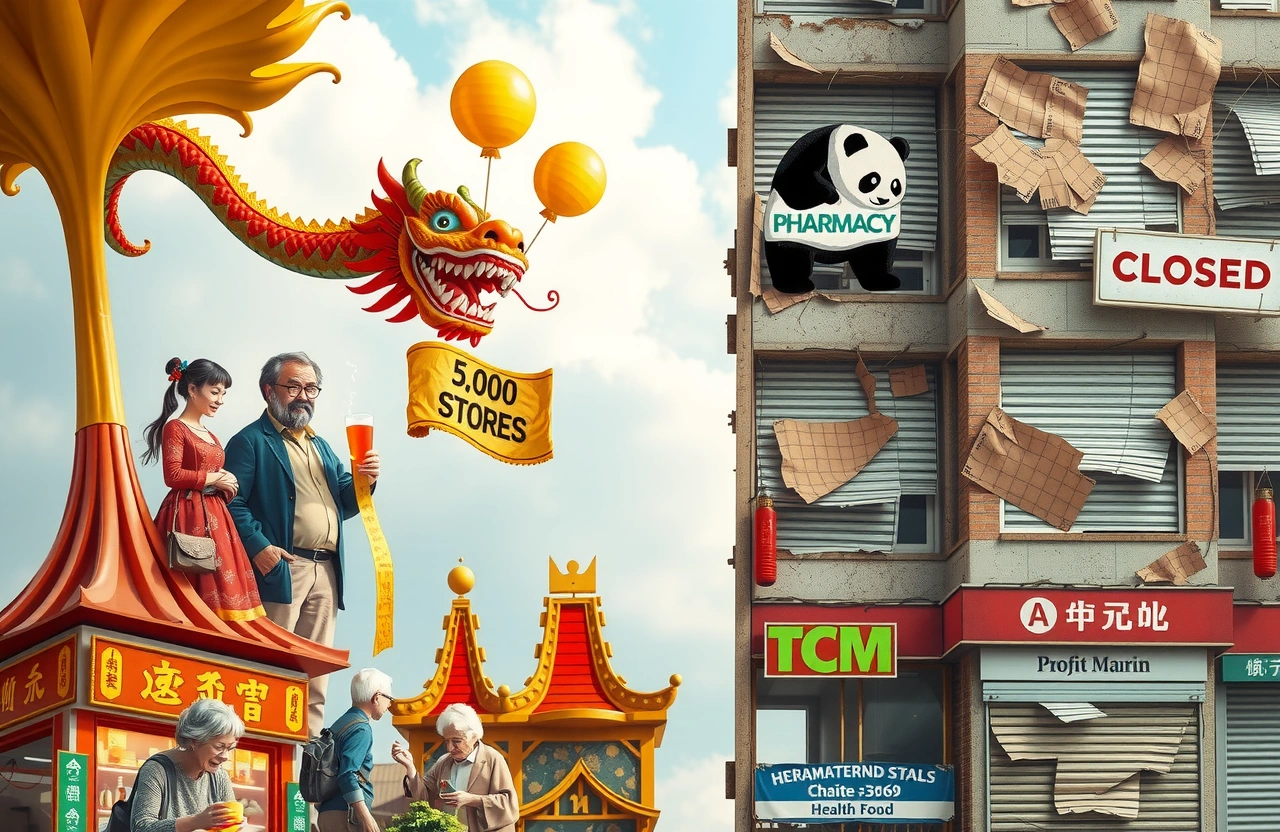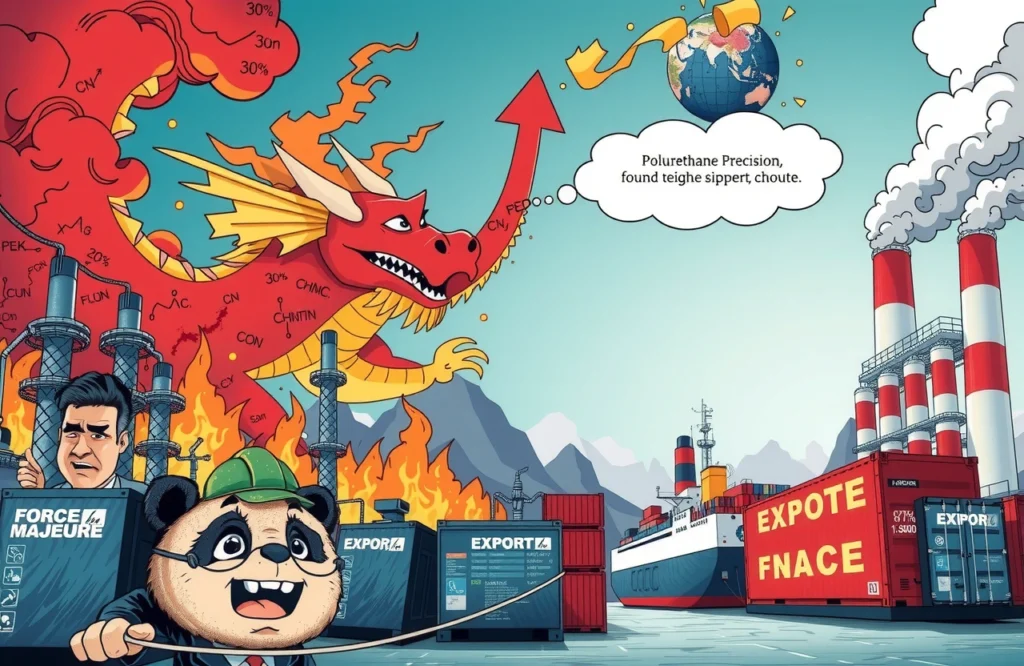China’s Health Retail Transformation
The ground beneath China’s pharmaceutical retail sector is shifting dramatically. Sweeping regulatory changes, demographic trends, and evolving consumer preferences have sparked a profound realignment within China’s healthcare marketplace. Traditional Chinese medicine (TCM) manufacturers aggressively push into physical retail spaces as they pivot toward lucrative health products, while traditional pharmacy chains face an existential reckoning. This striking divergence emerges from converging pressures: stricter drug approval standards, shrinking pharmaceutical profit margins under national procurement programs, and booming consumer interest in preventive wellness solutions.
Key developments reshaping the industry:
- TCM giants plan thousand-store expansions targeting premium health products
- Leading pharmacy chains close thousands of locations nationwide
- Industry profit margins drop 18-24% due to procurement reforms
- ‘Mixed operations’ emerge as pharmacies add food and supplements
- Manufacturers leverage heritage brands to capture wellness spending
Strategic Expansion by TCM Giants
Surging investment in physical retail underscores TCM companies’ pivot toward non-pharmaceutical revenue streams. Manufacturers build dedicated store networks to showcase premium herbal formulations, medicinal foods, and supplements—products exempt from stringent pharmaceutical regulations. The strategy leverages China’s growing $450 billion health foods market to counter shrinking medicine profits.
New Store Models Taking Root
Yabao Pharmaceutical’s Lifestyle Revolution
With ambitions to launch 5,000 stores by 2025, Yabao Pharmaceuticals proves one of the sector’s most aggressive investors. The company’s ‘Health Living Centers’ target middle-aged consumers through community locations blending in-store consultations with digital services. Franchisees report modest $10,000 entry costs and 3-6 month payback periods according to Caixin interviews.
Guangyuyuan’s Heritage Strategy
Guangyuyuan’s ‘premium Chinese medicine store’ blueprint targets wealthier coastal consumers. The pharma veteran expanded its popular Guilingji remedies into complementary formats like medicinal liquor, tea blends, and herbal paste. With 500 stores operational and plans to double within three years, CEO Li Xiaojun (李晓军) prioritizes affluent provinces where consumers spend 6-8 times more than inland counterparts.
Yiling Pharmaceuticals’ Product Ecosystem
After decades as pharma manufacturers, Yiling entered retail with ‘Health Pavilions’ showcasing regenerative supplements and functional foods. A company representative confirmed their late retail entry sought deeper consumer connections: “Without our own stores, premium positioning gets lost in pharmacy supply chains,” highlighting benefits of controlling brand experience.
The Offline Advantage
Physical locations resolve critical challenges confronting TCM companies:
- Premium health items require consumer education and trust-building
- Herbal formulations benefit from personalized consultation
- Dual-channel synergies support online-offline transactions
Sun Yuewu (孙跃武), Director of China Pharmaceutical Health Promotion Association, notes: “These stores transform intangible cultural heritage into tangible experiences. Consumers taste formulations, discuss lifestyle adjustments, and develop brand loyalties impossible through e-commerce alone.”
Retail Pharmacy Industry Contraction
As TCM manufacturers expand storefronts, pharmacy chains face closures accelerating nationwide. Industry leaders including Dashenlin (603233.SH) and People’s Pharmacy (603883.SH) collectively shuttered over 3,400 locations during 2023-2024 according to regulatory filings.
The Great Contraction by Numbers
Data from China Medical Health Association paints a sobering picture:
- 2024 Q4 witnessed net reduction of 3,395 pharmacies
- Industry closure rates accelerated 108% year-over-year
- Over 14,100 pharmacies ceased operations in 2024
- Dashenlin trimmed portfolio by 1,000+ underperforming stores
‘This consolidation represents necessary portfolio optimization,’ explained a Dashenlin investor relations officer. ‘Regional saturation and online substitution pressures make running small pharmacies untenable.’
Survival Strategies Unfolding
Surviving pharmacies demonstrate remarkable transformation capacity:
Footprint Optimization Tactics
Chain operators shrinking spaces includes Shenwei Pharmacy, Yifeng Pharmacy, and Huayao Drug Store. Physical reductions between 30-40% produce immediate rent relief while retaining prescription service zones. One Shenwei manager explained: ‘Customers entering for medicines stay for consultations. Cosmetic surgery services beside diabetes supplies? That’s where we rebuild margins.’
Category Transformation: The New Retailing Reality
Walk into Zhang Zhongjing Pharmacy today; experience resembles supermarkets rather than chemists according to visitor accounts:
- Traditional herbal zones expanded by 65-70%
- Shelf-space reallocated toward strategically foods
- Product bundling (herbs + functional foods)
Operations Director Wu Chengjie (吴承杰) confirmed: “Health food coexists perfectly with traditional pharmacy items. These incremental revenue streams represent survival.”
Diversification: Towards Mixed Retail Models
The pharmacy sector accelerates ‘mixed operations’ strategies.
Pharmaceuticals Meet Food Retail
Major pharmacies introduced non-traditional categories:
- Yixintang added infant formula sales
- Dajiaweikang launched wellness supplements
- Zhang Zhongjing integrated Zhongjing packaged foods
This operational shift encounters front-line challenges: Staff frequently lack functional food knowledge. Consumers report inconsistent product recommendations as chains roll out new inventory faster than training.
Wu Chengjie acknowledged workforce development priorities: “Our staff’s TCM literacy positions us perfectly for health foods. Proper coaching transforms uncertainty into competitive advantage.”
Synergies and Conflicts
The mixed-retail model presents conflicting incentives:
- High-margin supplements risk compromising trusted health guidance
- Labeling requirements differ across national product classification systems
- Regional regulations inconsistently govern food/pharma boundary products
Success requires strict adherence to China’s evolving Pharmaceutical Quality Management standards while educating consumers navigating unfamiliar formulations.
Navigating Market Uncertainties
TCM manufacturers simultaneously dive headlong into retail despite unresolved market contradictions. Zhu Xiaohong (祝孝光), Pharmacy Economics Research Director, cautions that explosive store growth risks premature saturation: “When franchised operators duplicate formats within kilometers, cannibalization becomes inevitable.”
TCM Production Complexities
Investigation reveals puzzling TCM retail dynamics:
- Branded products produced via third-party OEM arrangements
- Substantial pricing disparities for equivalent formulations
- Classification inconsistencies (food vs. medicine designation)
One Guangdong-based supplier reported producing nearly identical tonic soups under 27 brands across manufacturing collaborations. Pricing analysis shows items branded with pharma-standard prestige commanding 5-8x generic equivalents.
The Profitability Balancing Act
Industry analyst Chen Bin predicts consolidation: “Near-term crowding will plateau, leaving enterprises with authentic quality control surviving.” Pharmaceutical distributors report:
- TCM store COGS averages 53-58% versus pharmacy 67-71%
- Average daily revenue per-square-meter 35% higher at dedicated TCM outlets
These economics motivate expansion despite regulatory fog.
Forging China’s Health Retail Future
The divergent paths pursued by TCM manufacturers and pharmacy chains reflect divergent strengths. Sun Yuewu (孙跃武) from China Pharmaceutical Health Promotion Association suggests coexistence: “Manufacturers emphasize heritage formulation while pharmacies leverage accessibility. Both must pioneer sustainable retail integrations.”
Chinese consumers gain unprecedented options where health products meet heritage credibility. Regulatory clarity emerges as final requirements piece; Beijing reportedly drafting specialized guidelines for health-functional food substances.
The path forward demands collaborative innovation. Manufacturers should integrate pharmacy operators into expanding premium channels. Retail chains must leverage supply-chain efficiencies for health foods. Ultimately, successful players recognize consumer experiences matter more than categorization. As one Shenzhen pharmacist reflects while rearranging medicinal teas beside infant formula: “Who cares where medicines end and foods begin? Customers just want healthy tomorrows.”




